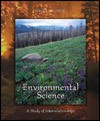 |  Environmental Science: A Study of Interrelationships, 8/e Eldon Enger,
Delta College
Bradley F. Smith,
Western Washington University
Human Population Issues
Chapter ObjectivesAfter reading this chapter, you should be able to:
| Apply some of the principles discussed in chapter 7 to the human population. |
 |  |  | | Differentiate between birthrate and population growth rate. |
 |  |  | | Describe the current population situation in the United States. |
 |  |  | | Explain why the age distribution and the status and role of women affects population growth projections. |
 |  |  | | Recognize that countries in the developed world are experiencing an increase in the average age of their populations. |
 |  |  | | Recognize that most countries of the world have a rapidly growing population. |
 |  |  | | Describe the implications of the demographic transition concept. |
 |  |  | | Understand how an increasing world population will alter the worldwide ecosystem. |
 |  |  | | Recognize that rapid population growth and poverty are linked. |
 |  |  | | Explain why less-developed nations have high birthrates and why they will continue to have a low standard of living. |
 |  |  | | Recognize that the developed nations of the world will be under greater pressure to share their abundance. |
|



 2002 McGraw-Hill Higher Education
2002 McGraw-Hill Higher Education